
By Judy Carmack Bross
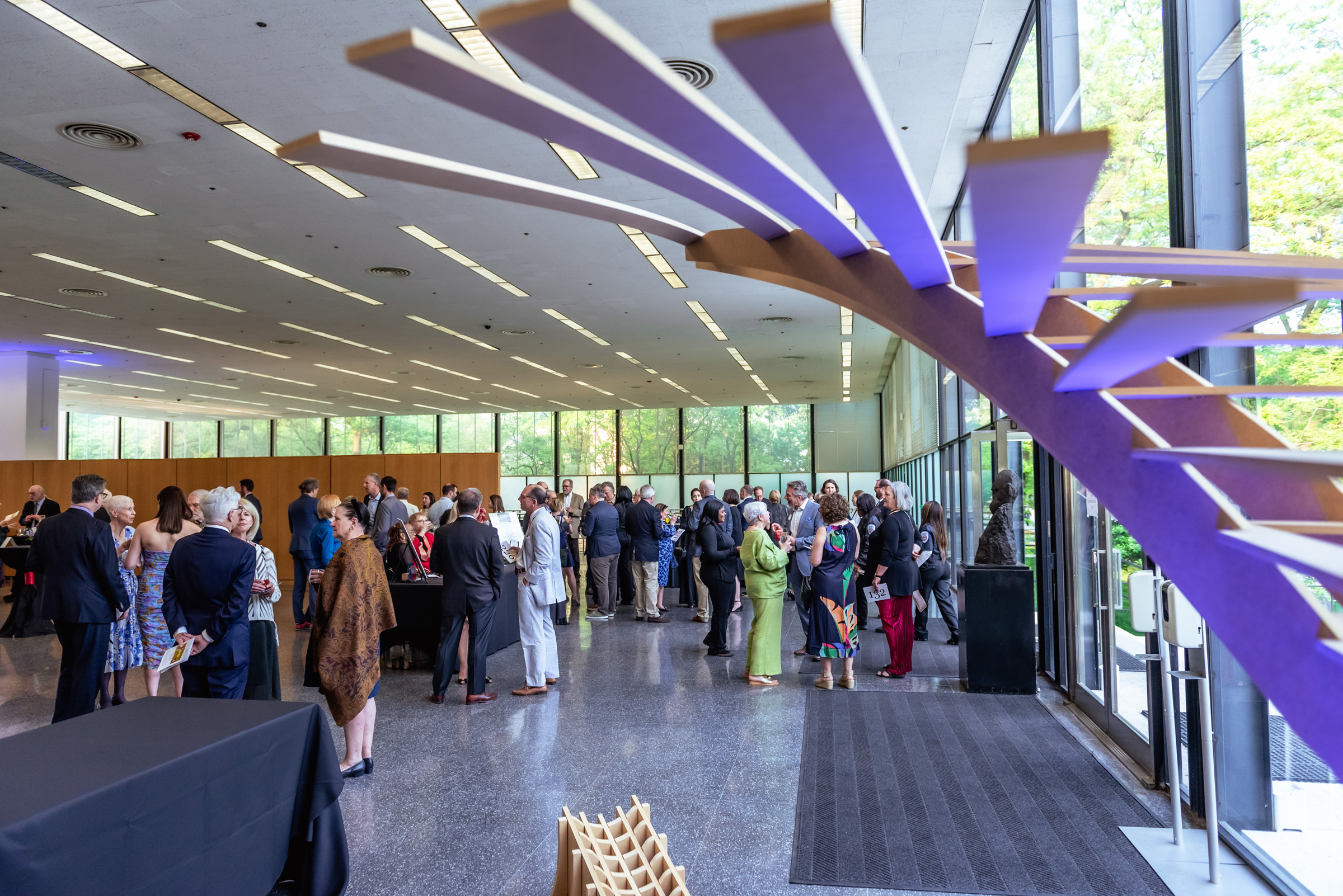
Gala Guests in Crown Hall

Pictured from left to right: Gunny Harboe, Barbi Donnelley, Michelangelo Sabatino, Tom Donnelley.
Swag bags filled with Bertha Palmer brownies, Cracker Jacks, Juicy Fruit gum and donuts given to the 175 guests at the recent Glessner House gala celebrated items enjoyed at Chicago’s Two World’s Fairs—the World’s Columbian Exposition 130 years ago and the Century of Progress 90 years past. Who better than internationally renowned architect Jeanne Gang to serve as Honorary Chair and tell of the Fairs’ impact on Chicago architecture during the gala which was interspersed with Fair trivia contests and other tributes to these extraordinary international events.
The association of the John and Frances Glessner who built their Prairie Avenue home designed by H. H. Richardson and is now a preeminent house museum, and the Columbian Exposition went together, just like Fair visitors and Cracker Jacks. The molasses covered blend of popcorn and peanuts was first presented to the public at the 1893 Fair.
Glessner House Executive Director William Tyre told us:
“Many people connected with the Fair were guests for dinner on Sundays for the more informal ‘suppers.’ The Glessners were close friends with Daniel Burnham, the Fair’s Director of Works, who introduced them to various individuals ranging from the architects and artists of the Fair to officials representing various countries. One of their closest friends was Frederick Law Olmsted, whom they had originally met through H. H. Richardson. They were former Brookline neighbors and frequent collaborators. When Olmsted would come to Chicago to oversee the work on the Fairgrounds, he would usually stay with the Glessners. They would even make arrangements for him to stay in the house when they were away at their summer home in New Hampshire, as the house was never shut down completely.”

Brad White and Gunny Harboe.
Preservation Architect T. Gunny Harboe received the first ever John and Frances Glessner Award at the benefit held at the Mies Van der Rohe modernist masterpiece Crown Hall on the I.I.T. campus. Tyre paid tribute to lead sponsors Berglund Construction, David Martland, and Barry Sears. “Through sponsorships, ticket sales, donations, the online auction, and the paddle raise, we raised $100,000 to support the mission of Glessner House, including $31,000 earmarked for the completion of the last phase of our geothermal system.,” Tyre said.

William Tyre and Lisa Koenigsberg present the Glessner Award to Gunny Harboe.
Keynote speaker for the evening was Michelangelo Sabatino, director of the PhD program at the IIT College of Architecture who was joined by board member Lisa Koenigsberg and Tyre to present the award to Harboe.
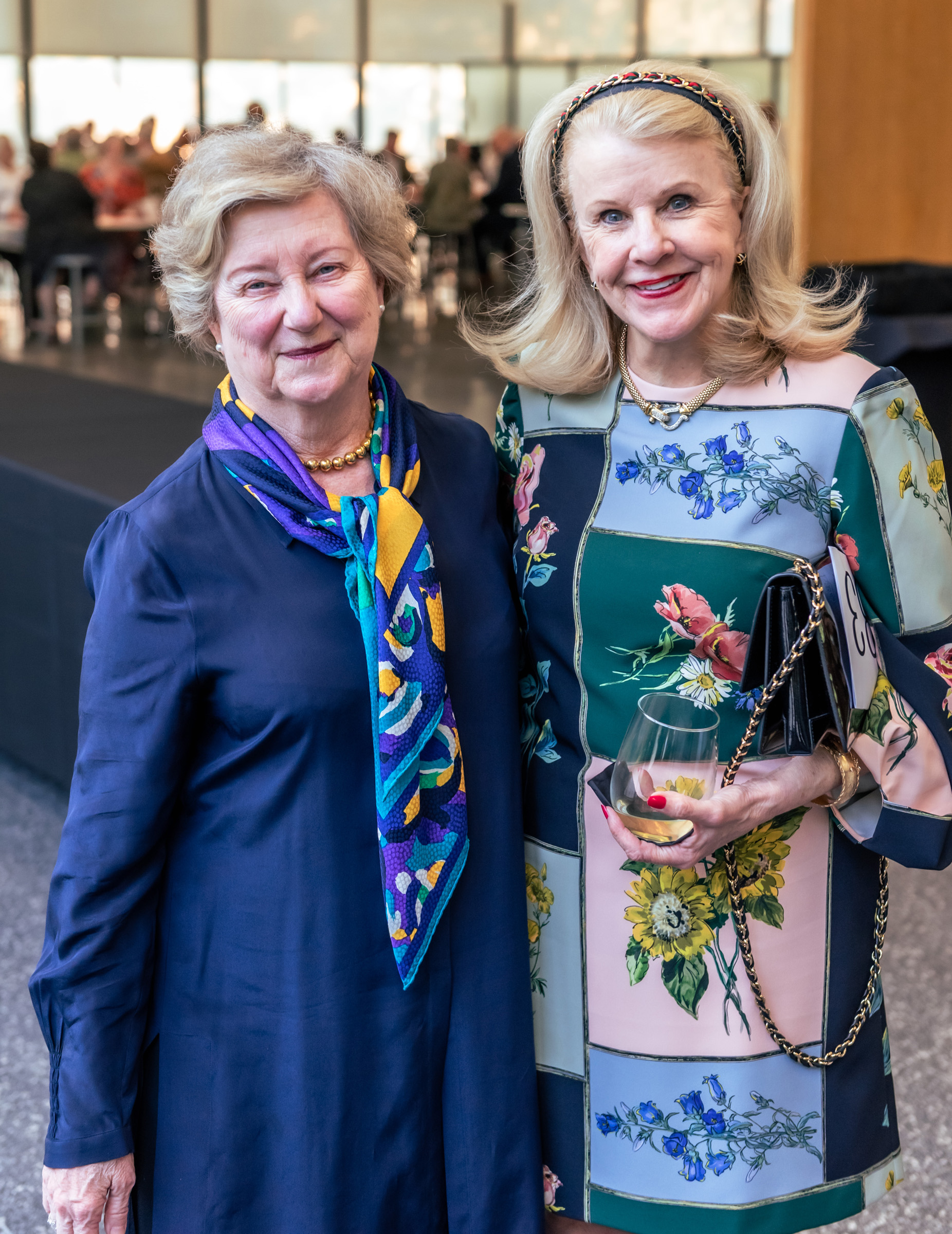
Joan Blew and Peggy Snorf
 Ann Belletire, Bill Tyre, and Linda Miller |
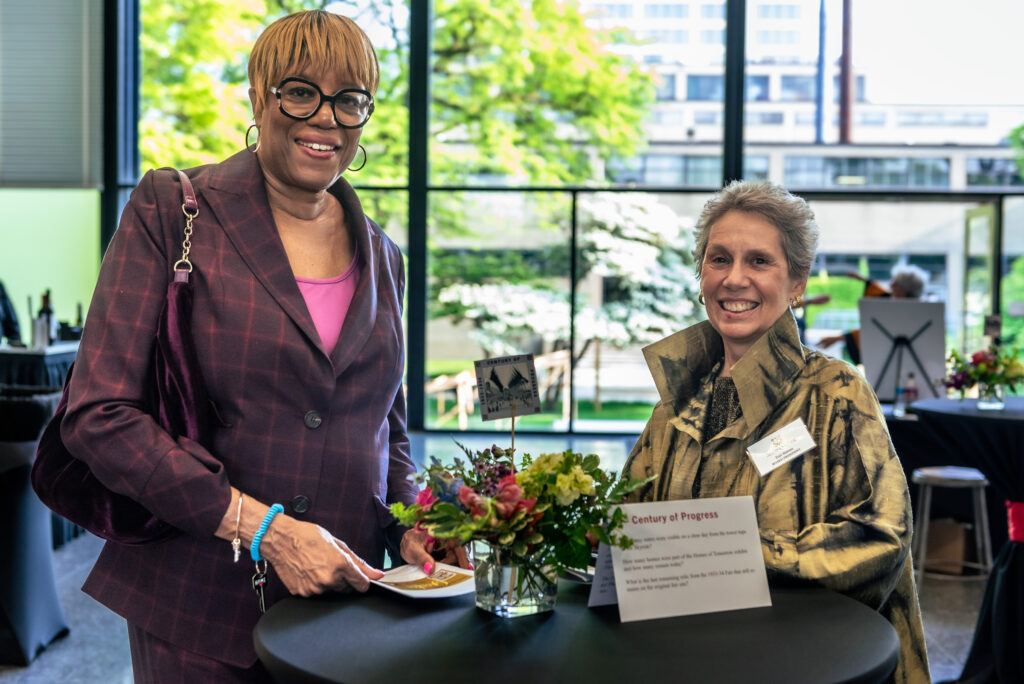 Ald. Pat Dowell – board president Tori Simms |
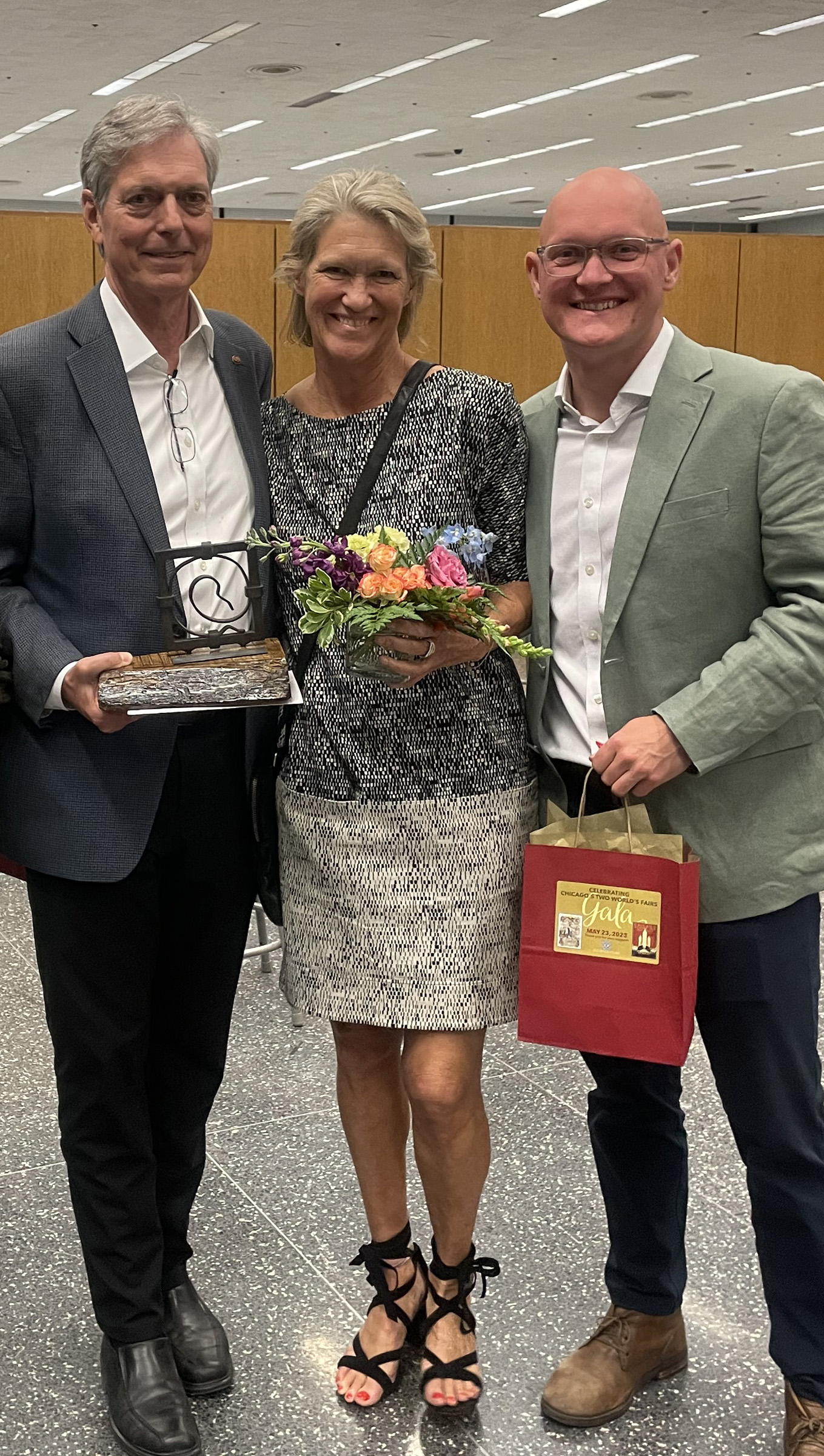
Gunny Harboe with his wife, Patsy Dimm, and son Graham Harboe

Even before Chicago’s World’s Fairs John and Frances Glessner were Chicago’s true power couple and their Prairie Avenue home was filled with Chicago leaders from business, the arts and philanthropy throughout the winter months. During the summer they headed for what they called “the North Country”.
This year marks the 140th anniversary of the Glessners construction of their summer estate in Bethlehem, New Hampshire and the opening of the restored carriage barn as an educational center.
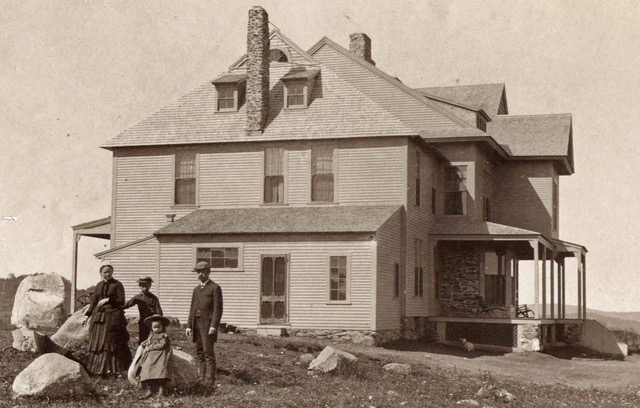
The Glessner Family at The Rocks.

Carriage barn under renovation
In last week’s Classic Chicago we asked our readers to tell us about summer places where you return again and again. Learning from Tyre about the Glessner’s estate, named for the granite boulders which littered the landscape–and which farm workers spent decades removing and building beautiful 4-foot-tall and 4-foot-wide walls along the roads–seemed a great way to begin this summer series.

The Big House after remodeling.
Bill Tyre shared the Glessner’s summer place with us.
“The Rocks was selected due to the Glessners’ son having severe hay fever, his doctor recommended the location, and the son found complete relief – the area became nationally known for hay fever relief. After spending several summers at a resort hotel, the Glessners purchased a 100-acre farm in 1882.
“They completed their home, known as the Big House, in 1883 and moved into the house in August of that year. Their friend Isaac Scott designed the original house which was significantly enlarged and remodeled in 1899 by Shepley, Rutan, and Coolidge.
Frances Glessner and their children, George and Fanny, would spend the entire summer there. John would return to Chicago for part of the summer to attend to his business – Warder, Bushnell and Glessner – which merged with four other companies in 1902 to form International Harvester.

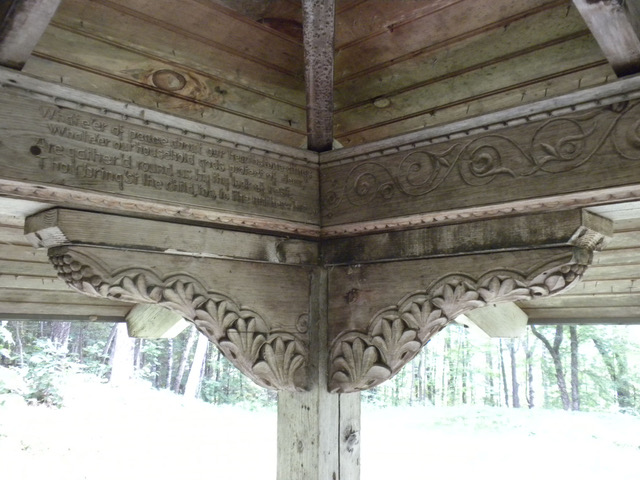
“Frances Glessner was an accomplished beekeeper at the estate from 1894 until 1909: in some years she gathered more than 1,000 pounds of honey during the season. Much of the land was an active working farm employing more than 100 men. The farm included a variety of crops and livestock, they were especially known for their prize-winning poultry and excellent butter–both of which the Glessners would also have shipped to their Chicago home throughout the winter.”
It may also be of interest to note that the Glessner spent less time at The Rocks in 1893 due to the Fair. Their typical time there was early May to mid-October, but with the Fair running from May through October, they significantly shortened their time away from Chicago, not leaving until July and coming back in late September. The guest rooms of the house were filled almost continuously with friends and out of town family coming to see the Fair.”

Frances Glessner at The Rocks bee house at right
“The family retained the estate after the death of the Glessners in the 1930s, and operated the farm until the 1970s. In 1978, the grandchildren donated more than 1,300 acres to the Society for the Protection of New Hampshire Forests of which John Glessner was an early member. The donation required that a crop always be grown in the field. The Rocks operates a popular Christmas tree farm, with 60,000 trees growing on the property. Most of the remainder of the property has been allowed to return to its natural forested states. Trails are available for exploration.
“On September 23, 2023, the Society will open the newly renovated Carriage Barn as the center for their conservation activities in the North Country.”
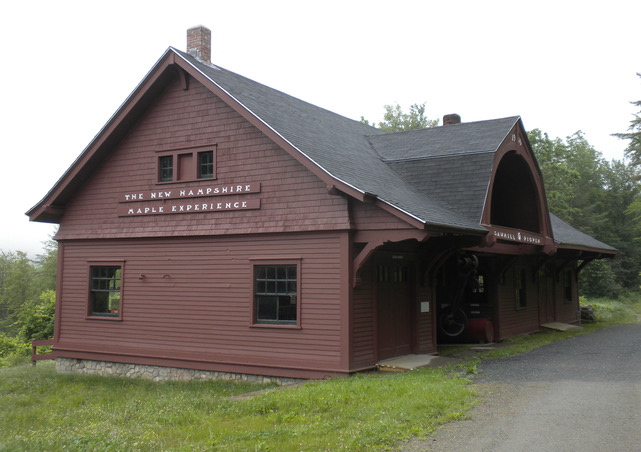
“I have had the privilege to visit The Rocks numerous times since 2010. During that first visit, I was immediately embraced by the magic of the place – the sweeping vistas with views of the White Mountains, the gardens, the incredible natural landscape with its endless varieties of trees and flowers, the beautiful stone walls, and the surviving buildings, including Frances Glessner’s beehouse with quotes about bees carved into the facia boards, and the lovely sawmill-pigpen designed by the Glessners’ good friend, architect Hermann V. von Holst, which now houses the New Hampshire Maple Experience,” Tyre said.
To learn more about John and France Glessner and the Glessner House museum, its programs and visiting hours, go to: glessnerhouse.org.







